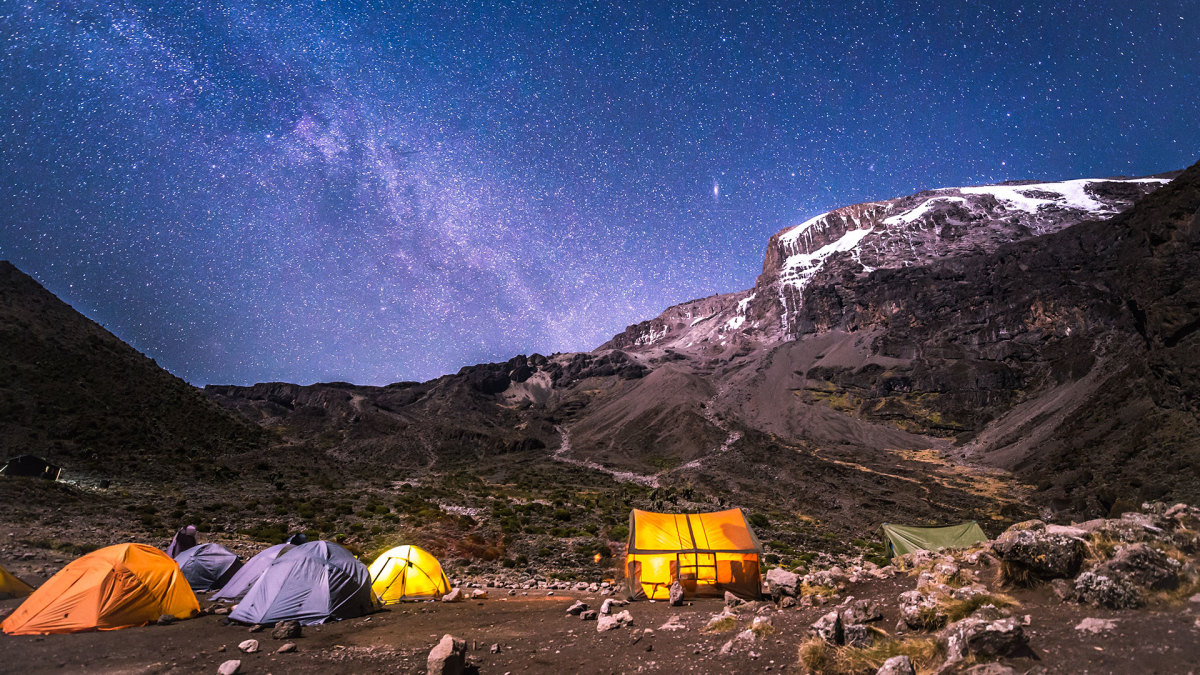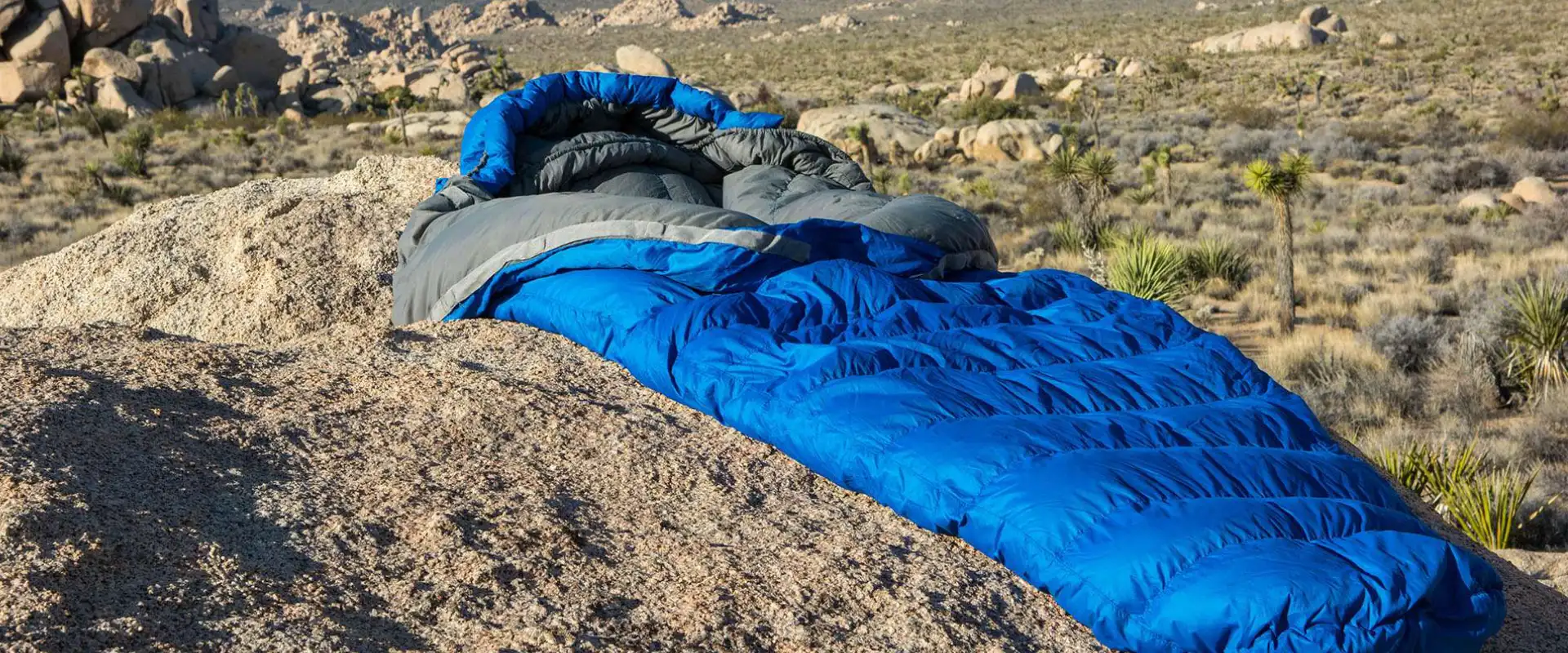What is the Best Sleeping Bag for Climbing Kilimanjaro?
Why is it important to have a sleeping bag for Kilimanjaro?
“How cold does it get?” is one of the first things people usually ask when they want to climb Kilimanjaro. In the rainforest zone on the lower hills, the temperature at night stays between 50 and 60 degrees Fahrenheit. But just above that, in the steppe and moorland zone, it can already get below freezing at night. This is only day two of most climb plans. Kilimanjaro gets cold very quickly, as you can see.
Most tourists will sleep in camps that are between 15,000 and 16,000 feet high and in the alpine desert zone. At night, the temperature typically hovers around freezing; however, it can drop significantly lower due to the highly variable weather conditions on Kilimanjaro. That’s why you need a warm, four-season sleeping bag.
How do I know what temperature I need?
We suggest that you get a sleeping bag that can handle temperatures as low as 0F/18C or as high as -20F/29C.
To sleep “warm” or “cold,” meaning that some people get hot at night and others feel cold, is different for each person. Most women sleep cold.
Some people sleep warmer than others, so they can use a bag with a higher temperature number. To be safe, we suggest the warmer bags. That way, you can always control the temperature by putting on less clothing, partly or fully unzipping the bag, using it as a cover sheet, or not using the mummy hood.
Be aware that some sleeping bags will have “comfort” and “extreme” temperature rates written on them. The grade for “comfort” means the temperature at which most people will feel warm enough to sleep. The person who uses it at temperatures below “comfort” is likely to get cold. Women usually feel colder than men, so this number is a few degrees higher than what a man would normally rate it.
The “extreme” ranking tells you the lowest temperature at which you can still live. You won’t be comfortable at that temperature, so it’s not the lowest temperature. At this setting, you shouldn’t use the bag very often. That’s how hot or cold the bag will keep you living.
What kind of stuff do sleeping bags have inside?
Either duck or goose feathers (a down bag) or polyester (a synthetic bag) make up a good sleeping bag. Both do the same thing, which is to keep warm air inside the bag.
Down Sleeping bags
A down sleeping bag provides more warmth while being lighter in weight. Down is the only thing that can match it. The fill-power of down tells you how fluffy or lofty it is. People often think that fill power is equal to the amount of down in a bag, but it’s actually the number of cubic inches that one ounce of down would fill. It takes up more room as the fill-power goes up. Like, one ounce of 800-fill down (which is very fluffy) takes up 800 cubic inches of room.
As a bonus, down bags are warmer, lighter, and easier to pack up. Their high level of warmth economy costs more.
Sleeping bags made of plastic
Polyester fibers are what make up a plastic bag. There are two main types of filling used in synthetic bags: short-staple fills and continuous thread fills.
Due to the thick packing of short strands of thin filaments, short-staple fills make sleeping bags soft, flexible, and easy to pack away.
The filaments in continuous-filament insulation are longer and stronger than those in short-staple insulation. They are less flexible but last longer.
Down vs. Synthetic Rugs
When you compare down bags to synthetic bags, keep in mind that a down bag with the same temperature grade as a synthetic bag will always be lighter and easier to pack. One thing that is different about down sleeping bags is that they lose their warmth very quickly if they get wet. Think about how flat feathers get when they are wet. Synthetic bag fibers don’t compress like feathers, so they stay warm when wet.
You can climb Kilimanjaro with either a down or a polyester sleeping bag.
It depends on how much you’re willing to spend on a sleeping bag and how important it is to you that it is light or easy to pack up. Our porters will move it from one campsite to another, so size doesn’t matter. Regardless, these items could influence your future travels.
It’s important to note that the only materials that work for sleeping bags on Kilimanjaro are down and synthetic fill. You may have seen cloth or cotton sleeping bags. Don’t bring these! These are not heavy-duty sleeping bags for the mountains.
You shouldn’t sleep in cotton bags.
For family trips and camping trips in the car, cotton sleeping bags are excellent. They don’t work in mountains with a lot of snow. They’re too big and heavy, and they probably aren’t warm enough for the weather.
What kind of sleeping bag do you suggest?
The Lamina -20F sleeping bag from Mountain Hardwear
The Mountain Hardwear Lamina -20F Sleeping Bag is our top pick.
People who rent our sleeping bags love how warm and cozy this bag is. This synthetic bag keeps heat in even when it gets wet and improves thermal efficiency. You can sleep easily in Kilimanjaro’s coldest nights because the double draft collar keeps cold air out and the hood pulls down to keep warm air inside the bag.
The North Face Inferno -20F/-29C Sleeping Bag is the second sleeping bag we suggest.
There is waterproof cloth on the hood and footbox of this 800-fill down sleeping bag, and it is filled with down clusters that don’t absorb water. Even when it rains, it stays warm.



















